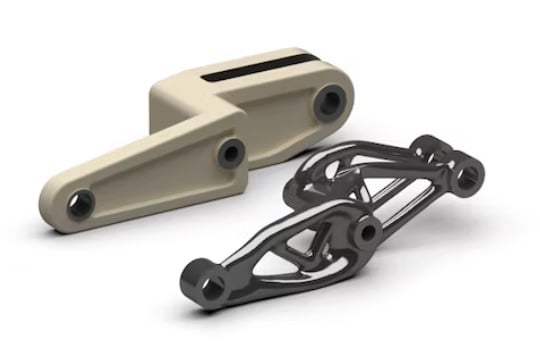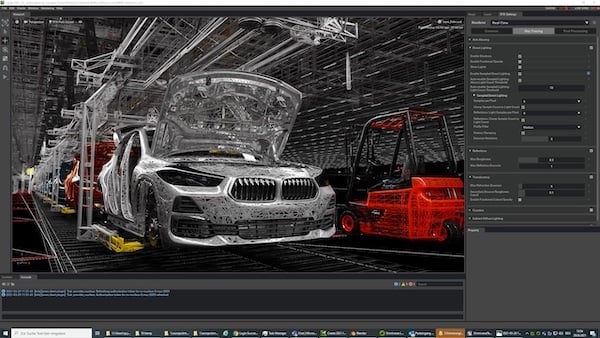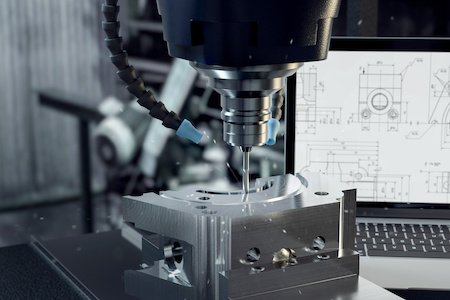
This year, Autodesk Fusion 360 is 10 years old. First commercially available in September 2013, it was introduced as a cloud-based CAD/CAM tool, aiming to integrate various aspects of product development in a single platform. Users and CAD press alike saw Fusion 360 as the shape of things to come and the eventual replacement for Autodesk Inventor.
Ten years and more than $1 billion of R&D funding later, Fusion 360 has evolved significantly, incorporating a wide variety of functionalities — many acquired from smaller companies. It has developed a loyal following, especially from those using the CAM capabilities. Unfortunately for Autodesk, the one thing Fusion 360 did not become is a way to steal customers from Dassault Systemès Solidworks. If anything, the gap has widened between Solidworks and the Autodesk 3D MCAD family.

With each update, Autodesk Fusion 360 becomes more adept at identifying and applying materials. Image source: Autodesk.
CAD users have proven to be resistant to change for change’s sake. Autodesk’s net revenue for the AutoCAD line was more than $600-million in the most recent fiscal quarter. Ten years ago, people were talking about AutoCAD being in its final days; today it is still a leading MCAD program.
The leading browser-based MCAD product on the market is PTC Onshape, which has not materially impacted sales but continues to be a proof of concept platform the rest of the industry emulates.
Most MCAD users continue to be brand loyal — unless a new client demands change. So if a billion in development spending doesn’t convince the majority of mechanical designers to jump to cloud-centric workflows, what kinds of change are they interested in? We believe increasing cloud connectivity in CAD will be the byproduct of engineers seeking integration with new use cases and technologies while still using their existing CAD tools.
7 Trends for Design Workflows
The following seven trends are not futuristic predictions, they are happening here and now. As engineers seek improved workflows in these following areas, vendors will continue to adapt their products to meet these new tasks.
1. Greater realism and complexity in simulations. As graphics capabilities become ever more realistic, MCAD vendors will continue to enhance simulation capabilities. This is also part of the move toward simulation-based design. Expect more realistic analyses inside the CAD environment, including dynamic behaviors, complex material interactions, and integrated thermal and stress analysis.
2. Artificial intelligence and machine learning. AI didn’t arrive with the public launch of ChatGPT in late 2022. All the major CAD vendors have been integrating AI/ML routines to automate existing tasks for years. If any of the trends listed here will go through a sudden growth spurt, it will come from the more overt application of AI tools for design optimization including increased access to expertise and complex data sets.

Generative design used a combination of artificial intelligence and raw compute power to create multiple design options much faster than an engineer working manually. A common use of generative design for product development is to create lighter versions of existing parts, as well as parts which can only be produced by additive manufacturing. Image source: Siemens Digital Industries Software.
3. Off-loading complex simulation. This is the most obvious form of connecting CAD to cloud technology, and already a popular way to temporarily extend a team’s compute resources. You can let one workstation grind away on a complex simulation for hours or days, or upload the problem to a cloud-based simulation and get answers in minutes.
4. Generative design and topology optimization. The best generative design tools in MCAD are currently at start-ups; expect that to change as Autodesk and Solidworks answer the “build or buy” question by buying young companies with proven technology.

Nvidia Omniverse is a real-time display technology for 3D becoming popular as an enterprise visualization resource. An early use case was at BMW, where a virtual factory was created to plan and improve production. Image source: Nvidia.
5. Digital twin integration. It is the norm for new tools and uses to migrate from the largest manufacturers down to the SMB and team level. DT (digital twins) are rapidly becoming integral in many large-manufacturing workflows, which means their use will increase in mainstream engineering. DT is a cloud-based technology, allowing models in two or more locations to be in constant synchronization. Nvidia’s Omniverse and Dassault’s 3DEXPERIENCE lead the market, but it is certainly early days for how this technology will integrate into most workflows. Expect more tools for creating and utilizing digital twins for simulation and analysis purposes.
6. Sustainability and lifecycle analysis. There is huge societal demand for creating more sustainable products and services. Making it easier to assess environmental impact and sustainability directly within the CAD software is an emerging trend — one which requires cloud connectivity.
7. Immersive Visualization with VR and AR. This one has been the proverbial next year’s big trend for years. We aren’t all wearing headsets eight hours a day yet, but immersive visualization is continuing to grow. Design review, training, and onsite service are three of many new applications for CAD data.
The Future is Cloud Connectivity
These trends can be summarized as an unstoppable convergence between mechanical design and its impact in society. Realistic simulation, user-friendly integration between workflows, and the increased use of cutting-edge technology to streamline the design-to-production process are all made possible by the increased use of cloud connectivity. To twist an old proverb, if the user won’t go to the (cloud) mountain, the mountain will come to the user.

Searching for more information about Product Design & Manufacturing?
Click here!




Share This Post